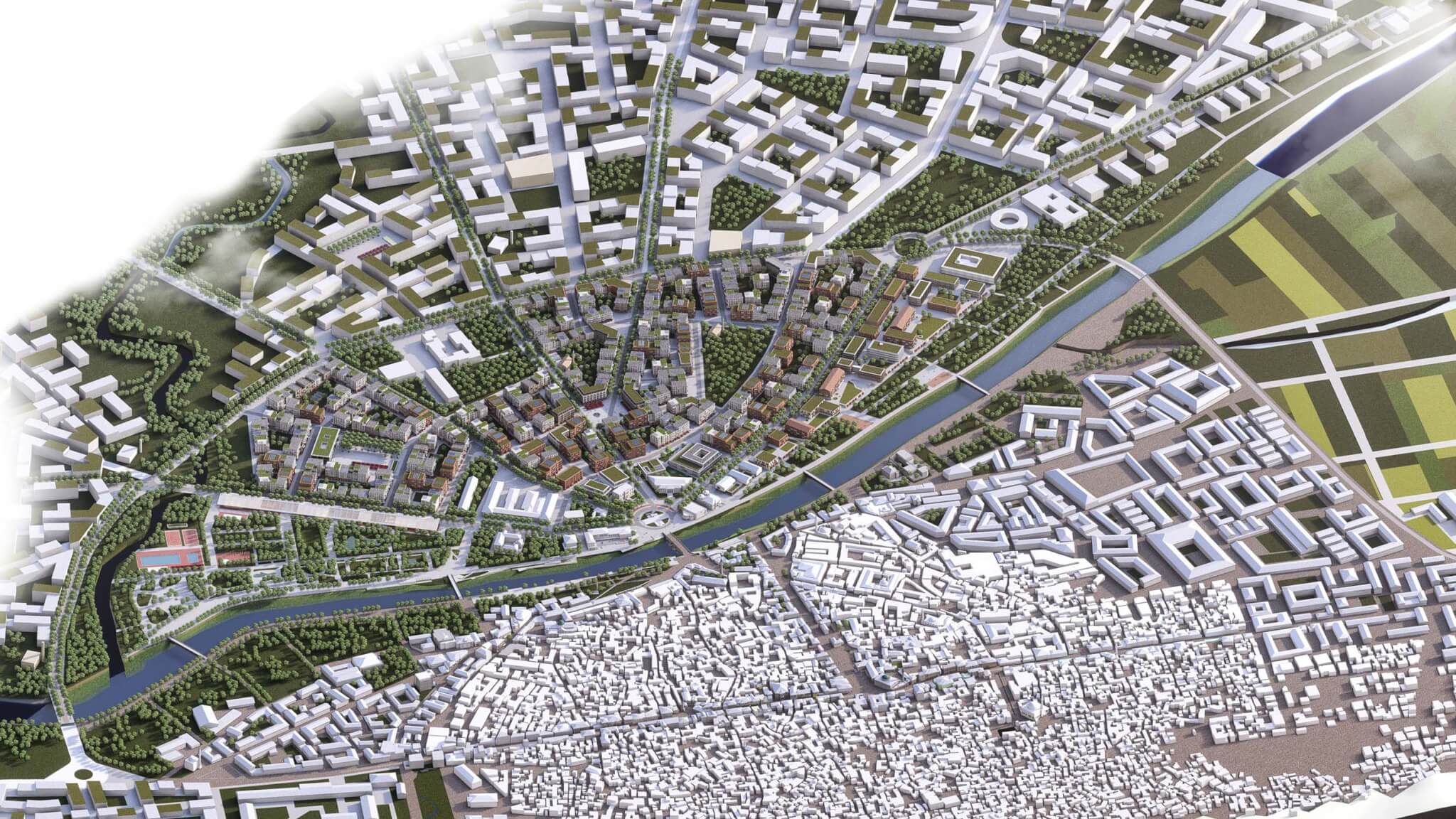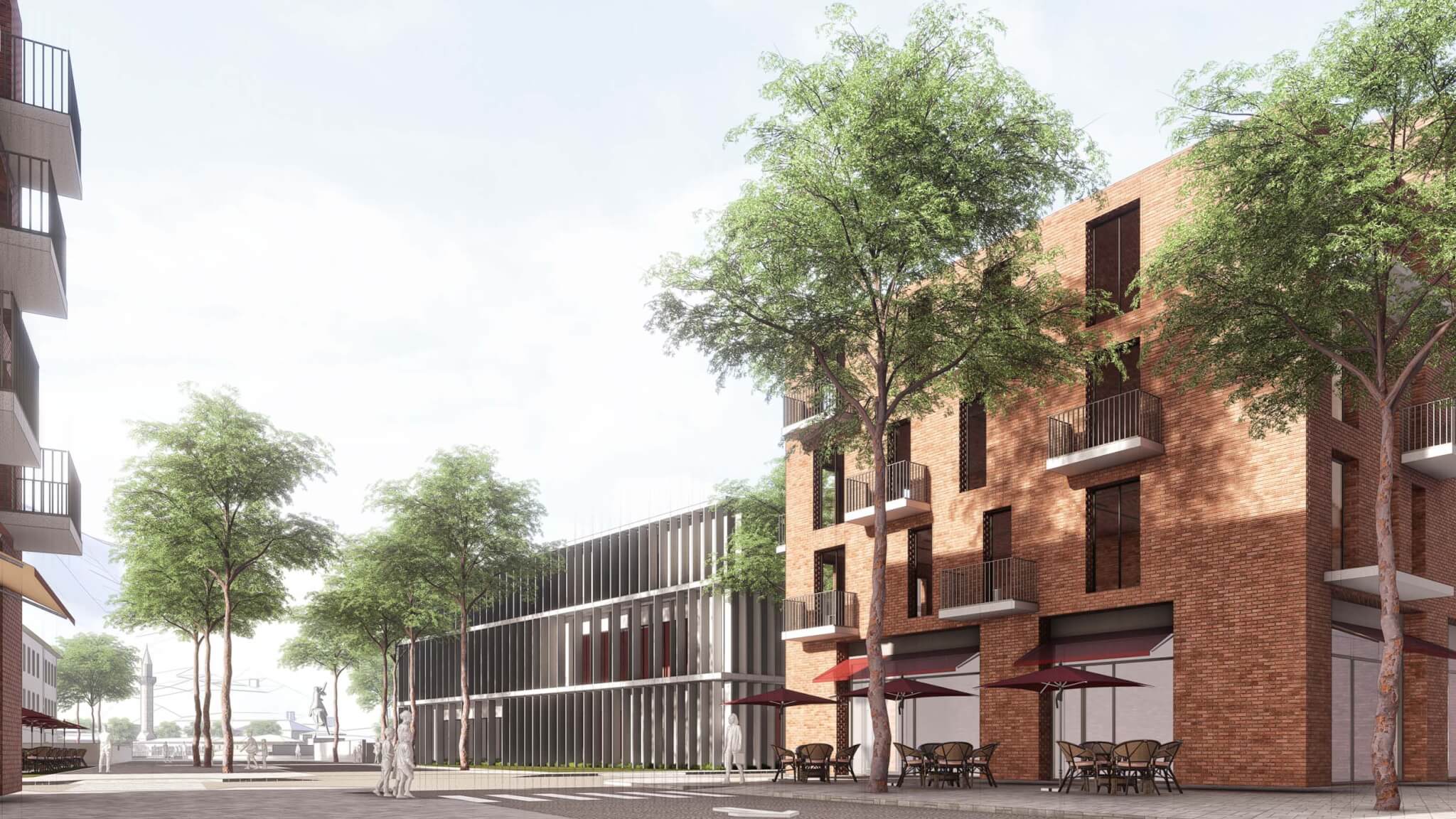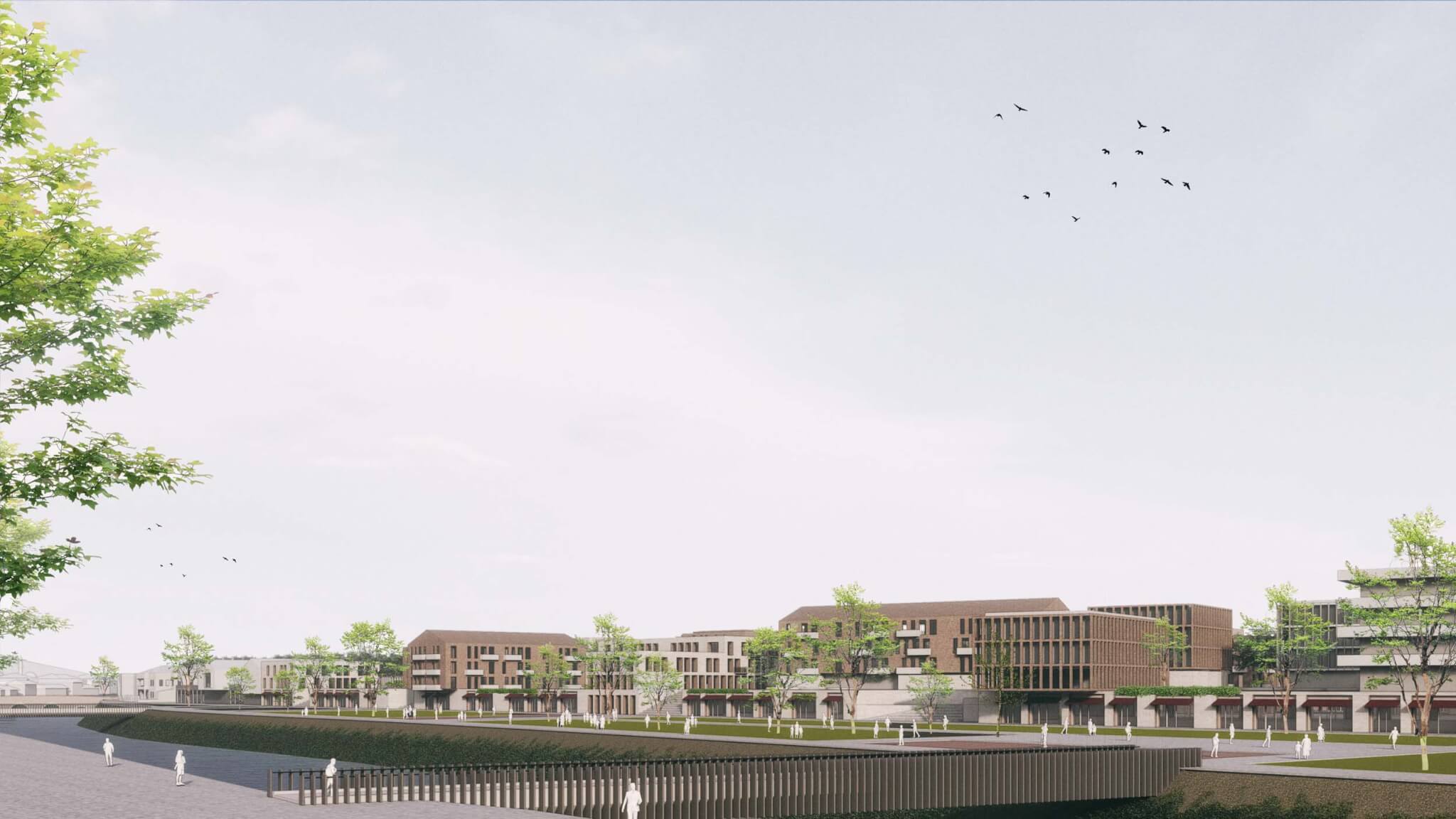As a region with a history dating back 2,300 years, the Hatay province in Turkey was a devastating loss for the country when a series of earthquakes shook the region this past February. The disaster—which is said to have destroyed 80 percent of Antakya, the provincial capital—spurred a renewed examination of building construction in the city. While the country has building codes in place mandating earthquake-resistant design, the practice is not often carried through to construction. To aid in the rebuilding effort, and to prevent future destruction in the event of another earthquake, the Türkiye Design Council (TDC) has commissioned a team of 13 architecture and design firms to master plan the city’s recovery.
TDC was established in 2016 and shepherds socioeconomic development projects in the country. Among the architects named to work on the large-scale rebuilding project are Foster + Partners, Bjarke Ingels Group (BIG), as well as Turkish practices DB Architects and KEYM (Urban Renewal Center).

In addition to plans for resilient structures, the vision will also consider climate resiliency, agricultural needs, and the restoration of historically significant sites, among these the ancient cities of Seleukeia Pieria and Antiokheia and a number of churches, mosques, bathhouses, and synagogues.
“Being a city within walls, Hatay requires a pedestrian-centric approach,” added Bünyamin Derman, founding partner of DB Architecture. “Our planning will also revolve around water, forestry, olive cultivation, and livestock, as we retain the prevalent agricultural courtyards incorporated throughout the city while addressing challenges related to global warming, such as emerging flood issues necessitating the restructuring of riverbeds.”

Hatay’s long history has seen the region rise to one of the most prominent and largest in the ancient world, to eventually falling under the control of the Persians and other early empires. February’s earthquakes were not the first to shake the region and country. In an op-ed written in AN, Turkish urban planner Tayfun Kahraman, currently in prison for opposition to construction and development plans as expressed in the 2013 Gezi Park protests, recalled the 1999 Marmara earthquake. The past disaster killed over 17,000 and led to proposed legislative changes, such as Disaster Law no. 6306, which Kahraman argues “imposes profiteering-focused urban transformation” that prioritizes urban development for a growing population rather than durable, disaster-resilient cities. Kahraman also calls for an improved contractor system, a better building inspection system, and regulating tenant’s rights.

In September, Kahraman, alongside Can Atalay and Mücella Yapıcı, received the European Prize for Architecture. The architects, scholars, and urban planners are each serving prison sentences for warning ahead of time about the gravity of an earthquake on the country and its infrastructure.

Early renderings of the master plan for the city show wide open pathways and patios lined with buildings that echo the materiality and architectural elements of past structures, notably with the use of stone and shutters.
The master plan is still in its early stages and will be fully revealed in 2024. TDC and the design team will receive input from Hatay residents on the rebuilding effort. In addition to the TDC, the plan is also being supported by the Turkish Ministry of Environment, Urban Planning and Climate Change, and the Ministry of Culture and Tourism.











